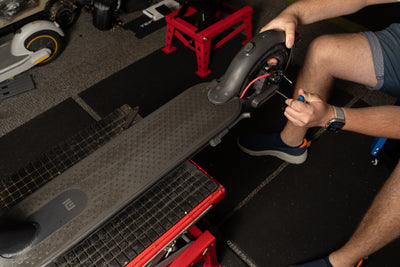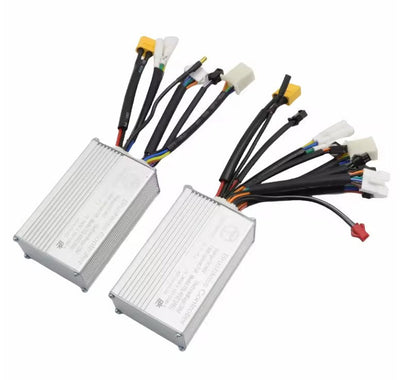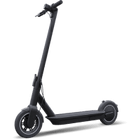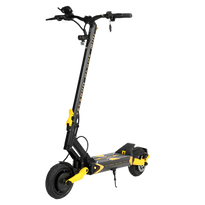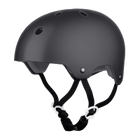A Buyers Guide to Electric Scooters
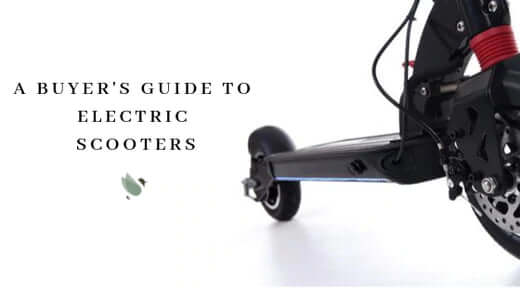
Electric scooters have recently taken New Zealand by storm. Being a new industry with a vast range of high-quality products, it can be overwhelming to interpret the ‘Electric Scooter lingo’ and understand product features. So, when looking for your electric scooter, here is what you should look out for to ensure you purchase the most suitable product for your requirements.
Weight
The heavier the machine, the higher the likelihood of more advanced features. For example, a very light electric scooter (under 12Kgs) will generally have a smaller battery (less distance) and limited suspension (less smooth ride). Of course, weight versus these features is a trade-off and will come down to user preference. Regardless of weight, all electric scooters fold down to a smaller size so you can put on it on the bus/ferry, or even in the boot of your car.
Motor

Electric scooters are all powered by internal brushless motors that are housed within the wheel. It’s the magic result of magnets coupled with electric charge, to create powerful force capable of propelling the scooter forward.
The size and power of the motor you require comes back to a few factors:
- Weight of the rider
- Acceleration required
- Terrain and incline
The power of electric scooters is determined by watts or the symbol ‘W’, which is typically the maximum power output. However, it’s not quite that simple, sorry!
Recent (NZTA) NZ Transport Agency regulation has stated electric scooters must be under 300W. This is not the maximum motor wattage, but the maximum ‘possible’ wattage (defined as the battery voltage multiplied by the controller amps). For example, for a 500W motor that has a 36V battery and a controller with maximum output of 8 amps, the total power per NZTA would be 288W.
As you can see from FREED’s range, our electric scooters exceed these regulations. We believe the rules were rushed and are not practical given New Zealand’s hilly terrain. We are corresponding with NZTA to have a more practical measure put in place. We believe a speed limit on footpaths of 15 km/h would be a better law, while allowing higher speeds on the road.
An electric scooter under 300W will struggle with any material incline and will require you to push with your foot to conquer hills. Obviously, the more wattage of the motor the less you will have to push
Ride Comfort (Suspension/Tyres)

The two key determining factors for ride comfort are tyres and suspension. If you travel on rough surfaces you’ll be guaranteed a headache and tired arms if you have an electric scooter with hard tyres and no suspension. Again, both have trade-offs!
Suspension
Some electric scooters come with no suspension, whereas others will have a front suspension or full (i.e. ZERO and EcoReco), which will include springs or air shocks for the rear. Having a dual suspension makes a huge difference to your overall ride quality, however these electric scooters will generally have an increased cost and weight.
Tyres
Tyres can generally be put into two categories, the first being solid rubber or secondly air filled. Solid rubber tyres are a lot more durable and obviously cannot go flat. This means you can be more aggressive with your riding, however, it will be a firmer ride. The other option is air filled, which despite being more forgiving on your hands, occasionally do get holes. This can mean inconvenient pit stops to have it repaired (of course, your friends at FREED can service this for you).
Size is the other final factor with tyres, typically these will be 8 inches, with a maximum of 10 inches. The larger the wheel the smoother the ride, however, the size of scooter when it is folded down will need to be a consideration.
Batteries
All electric scooters will be powered by lithium-ion batteries. The key things to look out for with batteries is the brand, size and finally voltage.
Generally, LG batteries are regarded as the market leader. This is primarily down to their reliability and the number of recharges possible. All lithium batteries will deteriorate (just as your cellphone doesn’t last as long as it once did). An LG battery (available in Eco Reco scooters or the ZERO 10X) are designed for 400+ charges while maintaining 80% capacity, while a Chinese battery will be around the 300 cyclers while still maintaining a similar 80% capacity.
Battery size is determined by AH, which means Amp Hours. The higher the AH will mean the larger capacity of battery, and therefore the further you can go. Again, this will mean more weight that the rider needs to account for.
The other element of batteries is the voltage, which can be described as the volume of power that can flow to the motor. For example the ZERO 8 has a 48V battery,
Brakes

There are two main types of brakes you will see in electric scooters, disk brakes and drum brakes, which can be single or dual.
Disk brakes should be looked at as the premium option, but do require more maintenance. Drum brakes are housed in a round drum that rotates along with the wheel. Under constant and heavy braking these can overheat, but generally will be fine for the average commuter.
Disk brakes meanwhile are located externally and can generally handle more strenuous breaking conditions than drum brakes.
Retailer location and Warranty
We all know that Google and Facebook now know everything. So as soon as you have showed the smallest interest in anything electric vehicle or electric scooter orientated, you will no doubt be bombarded with adverts from retailers selling you a range of related products.
Our guidance would be to fully understand who you are buying off. If they are based overseas and something goes wrong (even with a warranty) you might as well say goodbye to your purchase price as the shipping economics will not work. Look for a buyer who has a local retail presence, with the skills and expertise to service your scooter.
If you would like further advice and guidance in buying your electric scooter then please contact our team or visit us in store to test ride a scooter today.
info@freedpev.com | 021 498 269
23b Westhaven Drive, Auckland Central

